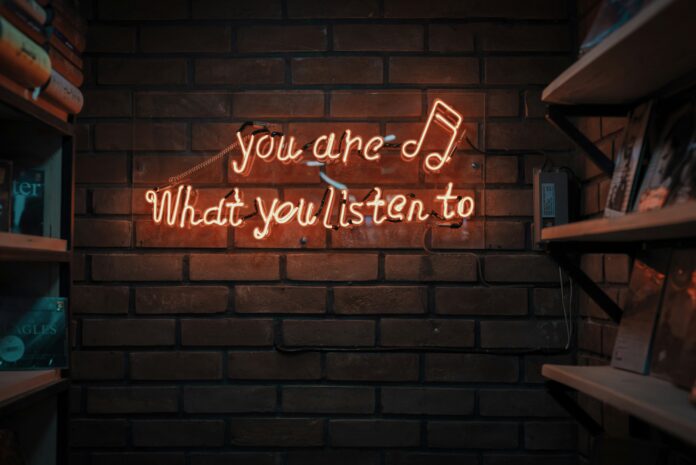The Invisible Craft: Editing That Listeners Don’t Notice (But Can’t Live Without)
No one thanks you for good editing.
Because if you do it right, they never notice you were there.
Editing isn’t just cutting “um” and “uh.” It’s shaping rhythm. It’s removing friction. It’s guiding the ear through a story — with such finesse that the listener never gets stuck, bored, or confused.
In this article, you’ll learn how to edit a podcast for clarity and flow, using professional techniques and beginner-friendly tools. Whether you’re working in Descript, Audition, or Audacity, you’ll walk away with a sharper ear — and a better show.
What Editing Really Is (Hint: Not Just Cutting)
Think of your podcast episode like a film.
Raw audio is your footage. Editing is:
-
Trimming the fat
-
Sequencing the story
-
Pacing the energy
-
Smoothing the transitions
-
Emphasizing the moments that matter
It’s not about being perfect. It’s about being clear, tight, and intentional.
✂️ Step 1: Start With the Big Picture — Not the Waveform
Before you touch a clip, ask:
-
What’s the core story or takeaway of this episode?
-
What parts support that? What parts distract?
-
Where’s the emotional arc?
Editing well starts with editorial thinking. This saves you from obsessing over tiny pauses while missing the big picture.
Pro move: Write down a rough outline or timestamped roadmap of your episode before you begin editing.
Step 2: Clean the Clutter Without Killing the Natural Voice
Yes, cut the filler — but don’t sterilize your speaker.
Here’s what to trim:
-
Long tangents
-
Rambling intros
-
Repetitive thoughts
-
Tech issues or interruptions
-
Heavy breathing, mouth noises (hello, RX Elements)
Here’s what to leave in (strategically):
-
Occasional “uh” or “you know” for realism
-
Natural breath — podcasts aren’t radio
-
Laughter, pauses, emotion — they’re humanizing
Aim for conversational clarity, not robotic polish.
Step 3: Pace Is a Secret Weapon
The most addictive podcasts have great pace — they don’t stall, and they don’t rush.
To improve pace:
-
Cut 10% more than you think you should
-
Tighten dead air between thoughts (0.2–0.5 seconds is gold)
-
Use silence intentionally — to punctuate, not to drag
-
Break long monologues with interjections, music, or resets
Pace isn’t about speed. It’s about momentum.
Step 4: Sequence Like a Storyteller
Especially in interviews, editing order matters. Don’t be afraid to move things around:
-
Bring the most compelling answer closer to the top
-
Save slower setup or theory for later
-
End on something personal or powerful
If a guest gives a great story at minute 40, but your intro is weak — flip the order. You’re telling a story, not filing a transcript.
Step 5: Use Music, Sound Design, and Transitions (Sparingly)
Used well, these elevate your edit. Used poorly, they become noise.
Tips:
-
Use music to open, close, or reset segments
-
Avoid loud, lyrical tracks that compete with voices
-
Fade transitions in and out cleanly
-
Match tone: calm interview ≠ hyper EDM bumper
Sites like Artlist, Uppbeat, or Epidemic Sound offer royalty-free music made for podcasts. Keep it consistent across episodes — branding matters.
Tools That Make Editing Smarter (Not Just Faster)
Depending on your level, these are the best tools to consider:
Beginner:
-
Descript: Edit audio like text. AI filler word removal, multitrack sync, remote recordings.
-
Audacity: Old-school but powerful. Free, open-source.
Intermediate:
-
GarageBand: Friendly for Mac users, decent for simple editing and music integration.
-
Hindenburg Journalist: Designed for spoken-word projects with auto-leveling and structure tools.
Advanced:
-
Adobe Audition: Industry standard. Deep control, powerful effects rack.
-
Reaper: Customizable, cheap license, pro-grade workflow.
Bonus: Use Auphonic to auto-level, normalize, and output your final mix at podcast-standard loudness (-16 LUFS stereo).
Smart Shortcuts for Solo Editors
-
Record with editing in mind (pause before restarts = easier cuts)
-
Use markers or clap when you make a mistake
-
Batch similar cuts across episodes to stay in rhythm
-
Learn 5–10 key keyboard shortcuts for your software
Time is precious. Build repeatable workflows.
Your Job as an Editor Is to Honor the Listener
Every cut you make is a service to the listener. You’re not just trimming audio — you’re curating attention.
Ask:
-
Is this sentence earning its place?
-
Will the listener feel more informed, entertained, or moved?
-
Am I getting out of the way of the story?
When you edit like that, your show becomes invisible in the best way.
✅ TL;DR – How to Edit a Podcast for Clarity and Flow
-
Think story-first, not waveform-first
-
Trim clutter but keep the human moments
-
Shape pace for momentum — not speed
-
Restructure if it makes the episode stronger
-
Use music and sound design as seasoning, not sauce
-
Know your tools, shortcuts, and workflow
-
Serve the listener. Always.
Joe Wehinger (aka Joe Winger) has 25 years of entertainment experience and 10 years in business working with Golden Globe winning, Emmy Winning, Hall of Fame inductee entertainment legends and business titans around the world. In addition to being a Directors Guild member and a certified Executive Producer (specialist in investor agreements, tax incentive, private financing), he runs the global digital marketing agency United Digital for over 12 years helping projects around the world create life-changing profits and positive impact. Today he’s studying how AI will interrupt and evolve our future.





![Fast Homemade Garlic Bread Spread Gets Gourmet Upgrade with Brala’s Best [Support Their Kickstarter] Garlic Bread Spread by Brala’s Best](https://dailyovation.com/wp-content/uploads/2025/08/Screenshot-2025-08-07-at-2.43.31 PM-218x150.jpg)



























